Михаил Супотницкий - Микроорганизмы, токсины и эпидемии
- Название:Микроорганизмы, токсины и эпидемии
- Автор:
- Жанр:
- Издательство:Вузовская книга
- Год:2006
- Город:Москва
- ISBN:нет данных
- Рейтинг:
- Избранное:Добавить в избранное
-
Отзывы:
-
Ваша оценка:
Михаил Супотницкий - Микроорганизмы, токсины и эпидемии краткое содержание
Кроме того, в монографии, впервые для отечественной литературы, обстоятельно освещены эпидемиология биологического террористического акта и методология выявления такого преступления. Книга хорошо иллюстрирована, содержит приложения и рассчитана на широкий круг специалистов.
Микроорганизмы, токсины и эпидемии - читать онлайн бесплатно полную версию (весь текст целиком)
Интервал:
Закладка:
Frasier M., Chernaia M., Kozlov Y. et al. Crystal structure of the holotoxin from Shigella dysenteriae at 2.5 Е resolution // Nature Structural Biology. — 1994. — Vol. 1, № 1. — P. 59–64.
Frittz D. L., Jaax N.K., Lawrence W.B. et al. Pathology of experimental inhalation anthrax in the rhesus monkey // Lab. Invest. — 1995. — Vol. 73, № 5. — P. 691–702.
Gage K., Ostfield R., Olson J. Nonviral vector-borne zoonoses associated with mammals in the United States // J. Mammalogy. — 1995. — Vol. 76, № 3. — P. 695–715.
Galbn J. Molecular genetic bases of Salmonella entry into host cells // Mol Microbiol. — 1996. — Vol. 20, № 1. — P. 263–271.
Gahring L.C., Heffron F., Finlay B.B. et al. Invasion and replication of Salmonella typhimurium in animal cells // Infect. Immun. — 1990. — Vol. 58, № 2. — P. 443–448.
Garred P. Chemokine-receptor polymorphisms: clarity or for HIV prognosis // Lancet. — 1998. — Vol. 351, № 1. — P. 2–3.
Garibaldi R. Epidemiology of community acquired respiratory tract infections in adults: incidence, etiology, and impact // Am. J. Med. — 1985. — Vol. 78, № 1. — P. 32–37.
Geiger W. HIV, AIDS und chinesische Medizin // Volksheilkunde. — 1994. — Vol. 46, № 5. — P. 14–22.
Gerstenecker B., Jacobs E. Topographical mapping of the P1-adhesin of Mycoplasma pneumoniae with adherence-inhibiting monoclonal antibodies // J. Gen. Microbiol. — 1990. —Vol. 136, № 2. — P. 471–476.
Gilles H. Epidemiology of malaria / Bruce-Chwatt's Essential Malariology. - London, 1993.
Goodall J. Population dynamics during a 15 year period in one community of free-living chimpanzees in the Gombe National Park, Tanzania // Z. Tierpsychol. — 1983. — Vol. 39, № 1. — P. 1 — 60.
Goosney D.L., Knoechel D.G., Finlay B.B. Enteropathogenic E.coli, Salmonella, and Shigella: Masters of Host Cell Cytoskeletal Exploitation // Emerging Infectious Diseases. — 1999. — Vol. 5, № 2. — P. 216–223.
Groisman E., Ochman H. Cognate gene clusters govern invasion of host epithelial cells by Salmonella typhimurium and Shigella flexneri // EMBO J. — 1993. — Vol. 12,№ 10. — P. 3779–3787.
Hagele S., Hacker B., Brand B. Legionella pneumophilla kills human phagocytes but not protozoan host cells by unducing apoptotoc cell death // FEMS Microbiol. Lett. — 1998. — Vol. 169, № 1. — P. 51–58.
Halpern J., Neale E. Neurospecific binding, internalization and retrograde axonal transport // Curr Top Microbiol Immunol. - 1995. — Vol. 195, № 1. — P. 221–241.
Harrington D. Bacterial collagenases and collagen-degrading enzymes and their potential role in human disease // Infect. Immun. — 1996. — Vol. 64, № 15. — P. 1885–1891.
Hathewey C.L., Vc Croskey L.M. Unusual, neurotoxigenic clostridia recovered from human fecal specimens in the investigation of botulism // 5 thInf. Symp. Microb. Ecol. (ISMES), Kyoto Aug. 27 — Sept. 1, 1989: Abstr. — S.I. [199]. — P. 33.
Hill A., Elvin J., Will A. et al. Molecular analysis of the association of HLA-B53 and resistance to severe malaria // Nature. — 1992. — Vol. 360. — P. 434–439.
Hill A., Worth A., Elliott T. et al. Characterization of two Epstein-Barr virus epitopes restricted by HLA-B7 // Eur. J. Immunol. — 1995. — Vol. 25, № 1. — P. 18–24.
Huq A., Colwell R., Rahman R. et al. Detection of Vibrio cholerae 01 in the aquatic environment by fluorescent-monoclonal antibody and culture methods // Appl. Environ. Microbiol. — 1990. - Vol. 56, № 12. — P. 2370–2373.
Huminer D., Rosenfeld G.B., Pitlik S.D.// Rev. Infect. Dis.-1987.- Vol. 9.- P.1102—.1109.
Hultgren S.J., Abraham S., Caparon M. et al. Pilus and nonpilus bacterial adhesis: assembly and function in cell recognition // Cell. — 1993. — Vol. 73, № 4. — P. 887–901.
Islam M., Drasar B., Bradley D. Survival of toxigenic Vibrio cholerae 01 with a common ducweed, Lemma minor, in artifical aquatic ecosystems // J. Trans. Roy, Trop. Med. And Hyg. — 1990. — Vol. 84, № 3. — P. 422–424.
Isberg R.R., Leond J.M. Multiple beta 1 chain integrins are receptors for invasin a protein that promotes bacterial penetration into mammalian cell // Cell. — 1990. — Vol. 60,№ 4. — P. 861–871.
Jacobs E. Mycoplasma pneumoniae virulence factors and the immune response // Rev Med Microbiol. — 1991.- Vol. 2, № 1. — P. 83–90.
Jackson P.J., Walters E.A., Kalif A.S. et al. Characterization of variaable-number tandem repeats in vrrA from different Bacillus anthracis isolates // Appl. Environ. Microbiol. — 1997. — Vol. 63, № 4. —P. 1400–1405.
Jurgen B., Henri T. Reverse trancriptase // Virus Genes. — 1996. — Vol. 11, № 2–3. — P. 163–179.
Kaslow R., Koup R., Zimmerman P. et al. HLA scoring profile (HSP) and CCR5 deletion heterozygosity as predictors of AIDS in seroconverters // In: Proceedings of the 4th Conference on Retroviruses and Opportunistic Infections; Jan 22–26. Washington (DC): American Society of Microbiology. — 1997. — P. 69.
Kalis R., Leond J., Streere A. et al. Association of treatment-resistant chronic Lyme arthritis with HLA-DR4 and antibody reactivity with OspA and OspB of Borrelia burgdorferi // Infect. Immunol. — 1993. Vol. 61, № 10. — P. 2774–2779.
Kauffman S. The origins of order. New York: Oxford University Press. - 1993. - P. 114–117.
Kirchhoff H, Rosegarten R, Lotz W, Fischer M. et al. Flask-shaped mycoplasmas: properties and pathogenicity for man and animals // Isr. J. Med. Sci. — 1984. — Vol. 10. № 4. — P. 848–53.
Kurokochi K., Akatsuka T., Pendleton C. et al. Use of recombinant protein to identify a motif-negative human cytotoxic T-cell epitope presented by HLA-A2 in the hepatitis C virus NS3 region // J. Virol. — 1996. — Vol. 70, № 1. — P. 232–240.
Lalitha M., Thomas M. Penicillin resistance in Bacillus anthracis // Lancet. — 1997. — Vol. 349, № 9064. — P. 1522.
Lederberg J. Infectious diseases as an evolutionary paradigm // Emerging Infectious diseases. — 1997. — Vol. 3, № 4. — P. 1–9.
Lederberg J., Shope R., Oaks S. Emerging Infections. Microbial Threats to Health in the United States. — Washington, 1992.
Lee Ann Campbell, Cho-Chou Kuo, Grayston J.T. Chlamydia pneumoniae and Cardiovascular Disease // Emerging Infectious diseases. — 1998. — Vol. 4, № 4. — P. 571–579.
Leilb M.C., Seilarth W. Evolution and biological significance of human retroelementies // Virus Genes. — 1996. — Vol. 11, № 2–3. — P.133–145.
Lemichez E., Flatau G., Bruzzone M. et al. Molecular localization of the Escherichia coli cytotoxic necrotizing factor CNF1 cell-binding and catalytic domains // Mol Microbiol. — 1997. — Vol. 24,№ 7. — P. 1061–1070.
Leslie L.B., Peters C.J., Ksiazek T.G. et al. Lymphocytic Choriomeningitis Virus: An Urecognized Teratogenic Patohogen // Emerging Infectious diseases. — 1995. — Vol. 1, № 4. — P. 152–153.
Levin B., Svanborg-Eden C. Selection and the evolution of virulence in bacteria: an ecumenical axcursion and modest suggestion // Parasitology. — 1990. — Vol. 100, № 2. — P. 103–115.
Levin B. The evolution and maintenance of virulence in microparasites // Emerging Infectious Diseases. — 1996. - Vol. 2, № 3. — Р. 16–24.
Levin B., Bull J. Short-sighted evolution and the virulence of pathogenic microorganisms // Trends Microbiol. — 1994. — Vol. 2., № 1., P. 76–81.
Levy J.A. HIV and the pathogenesis of AIDS // JAMA. — 1989. — Vol. 261, № 14. — P. 2997–3006.
Lobet Y., Cieplak W., Smith S.G. et al. Effects of mutations on enzyme activity and immunoreactivity of the S1 subunit of pertussis toxin // Infec. and Immun.- 1989.- Vol.57, № 11.- P.3660–1668.
Loevinsohn M. Climatic warming and increased malaria in Rwanda // Lancet. — 1994. — Vol. 343, № 2. — P. 714–718.
Loosmore S., Zealy G.R., Boux H.A. et al. Enginering of genetically detoxified pertussis toxin analogs for development of a recombinant whooping cough vaccine // Intec. and Immun.- 1990.- Vol.58, № 5.P.3653–3662.
Lottenberg R., Minning-Wenz D., Boyle MD. Capturing host plasmin(ogen): a common mechanism for invasive pathogens? // Trends Microbiol. — 1994. — Vol. 2, № 1. — P. 20–24.
Lurie M.B. Resistance to tuberculosis: experimental studies of native and acquired defensive mechanisms. — Cambridge, 1964.
Mager B. AIDS virus mutating at high speed // Biotechnol.News.- 1987.- Vol.7, № 23.- P.8.
Marquet S., Abel L., Hillaire D. et al. Genetic localization of a locus controlling the intensity of infection by Schistosoma mansoni on chromosome 5q31-q33 // Nat. Genet. — 1996. — Vol. 14, № 1. — P. 181–184.
Martin D. The Use of Poison and Biological Weapons in the Rhodesian War. — Harare. –1993).
Massung R., Esposito J.J., Knight J.C. //Virology. - 1995.-Vol.211, № 2.- P. 350–356.
Mazingue C., Cottrez-Detoeuf F., Louis J. In vitro and in vivo effects of interleukin-2 on the protozoan parasite Leishmania // Europ. J. Immunol. — 1989. — Vol. 19, № 2. — P. 487–492.
McGuire W., Hill A., Allsopp C. et al. Variation in the TNF-a promoter region associated with susceptibility to cerebral malaria // Nature. — 1994. — Vol. 371. — P. 508–511.
McNicholl J., Smith D.K., Qari S. et al. Host Genes and: The Role of the Chemokine Receptor Gene CCR5 and Its Allele (32CCR5) // Emerging Infectious diseases. — 1997. — Vol. 3, № 3. — P. 261–272.
McNicholl J. Host Genes and Lnfectious Diseases // Emerging Infectious diseases. — 1998. — Vol. 4, № 4. — P. 44–49.
Mecsas J., Strauss E.J. Molecular Mechanisms of Bacterial Virulence: Type III Secretion and Pathogenicity Islands // Emerging Infectious Diseases. — 1996. — Vol. 2, № 4. — P. 271–290.
Meselson M., Gillemin J., Hugh-Jones M. et al. The Sverdlovsk anthrax outbreak of 1979 // Science. — 1994. — Vol. 209, № 12. — P. 1202–1208.
Michiels T, Wattiau P, Brasseur R. et al. Secretion of Yop proteins by Yersiniae // Infect Immun. — 1990. — Vol. 58, № 11. — P. 2840–2849.
Miller L. Protective selective pressure // Nature. — 1996. — Vol. 383. — P. 480–481.
Miller-Hjelle M., Hjelle T.J., Jones M. et al. Polycystic Kidney Disease: An Urecognized Emerging Infectious Disease? // Emerging Infectious diseases. — 1997. — Vol. 3, № 2. — P. 113–127.
Montecucco C., Papini E., Sciavo G. Bacterial protein toxins penetrate cells via a four-step mechanism // FEBS Letters. — 1994. — Vol. 346, № 1. — P. 92–98.
Moore C., Francy D., Eliason D. et al. Aedes albopictus in the United States: rapid spread of a potential disease vector // J. Am. Mosq. Control. Assoc. — 1988. — Vol. 4, № 2. — P. 356–361.
Morse S. Factors in the emergence of infectious disease // Emerging Infectious diseases. — 1995. — Vol. 1, № 1. — P. 7 — 15.
Mosch C., Seifarth W., Evolution and Biological Significance of Human Retroelements // Virus Genes. - 1996. — Vol. 11, № 2/3. — P. 133–145.
Mukinda V., Mwema G., Kilundu M. et al. Reemergence of human monkeypox in Zaire in 1996 // Lancet. — 1997. — Vol. 349, № 9063. — P. 1449–1450.
Murphy P. Molecular mimicry and the generation of host defense protein diversity // Cell. — 1993. — Vol. 72, № 5. — P. 823–6.
Murphy P., Lane H., Gallin J. et al. Marked disparity in incidence of bacterial infections in patients with the acquired immune deficiency syndrome receiving interleukin-2 or interferon gamma // Ann. Intrn. Med. — 1988. — Vol. 108, № 1. — P. 36–41.
Читать дальшеИнтервал:
Закладка:
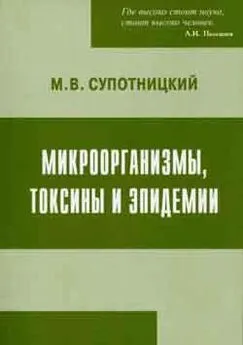
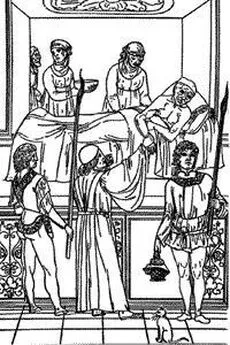
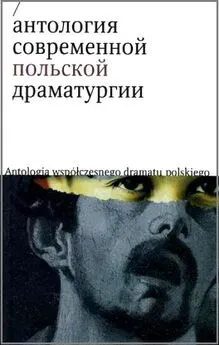
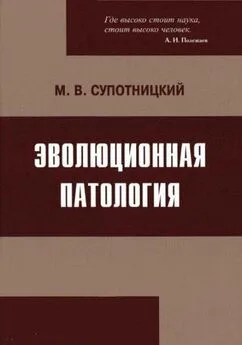
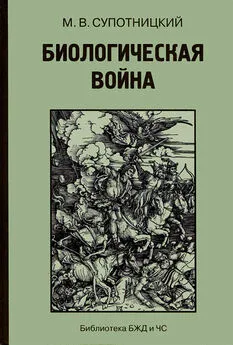
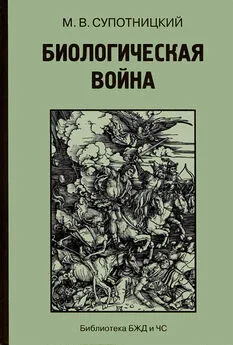
![Михаил Супотницкий - Очерки истории чумы. Книга II. Чума бактериологического периода [без иллюстраций]](/books/1084186/mihail-supotnickij-ocherki-istorii-chumy-kniga-ii.webp)
![Михаил Супотницкий - Очерки истории чумы. Книга I. Чума добактериологического периода [без иллюстраций]](/books/1084187/mihail-supotnickij-ocherki-istorii-chumy-kniga-i-ch.webp)


